In just 6 months time, the 2025 Simpler Recycling legislation will introduce new rules around food waste and local council recycling collections. For businesses, you will need to set up mandatory collections for dry recyclable materials, as well as a separate food recycling stream.
As well as recycling reforms, packaging reforms are set to be introduced too, these will come in to effect in 2027 and will make on-pack recycling labels mandatory throughout the UK and Europe.
These changes should improve recycling rates, but to make that happen, on pack and on product recycling symbols must be clear and understood.
And whilst legislation might cover the first part, consumers knowing best practices for following packaging symbols and how to recycle is the second part.
With change coming it’s a good time swot up on those recycling symbols!
Recycling symbols explained
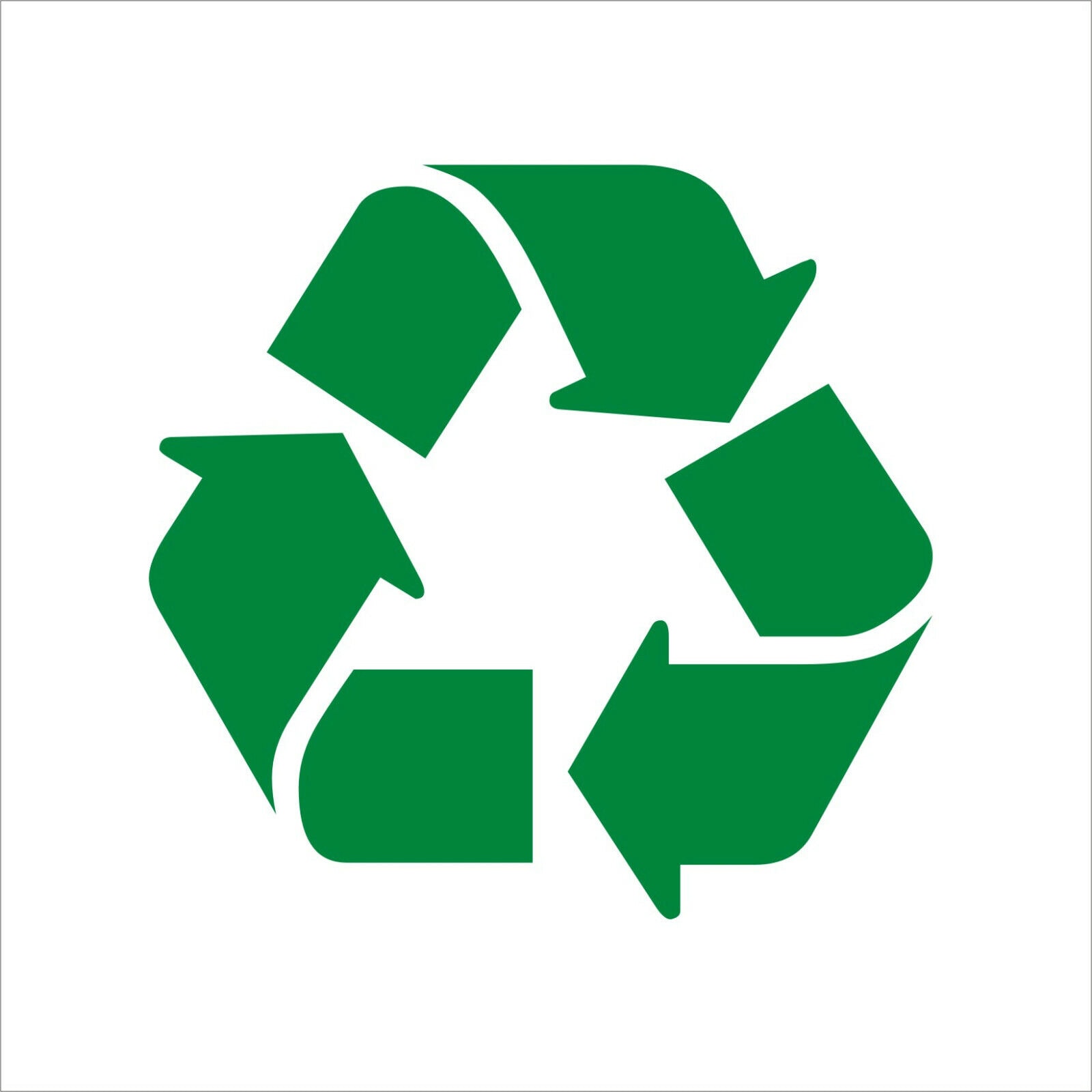
The original recycling symbol (known as the Mobius Loop) was designed in 1970 by American student Gary Anderson though it was more than 30 years later that councils in the UK started collecting recycling from homes. This was thanks to a Friends of the Earth campaign that brought about the Household Waste Recycling Act 2003.
Now the range of materials that we can recycle is far above what it was then, and the number of recycling symbols has grown to reflect that.
With the introduction of the Extended Producer Responsibility for packaging regulations, all consumer packaging must be clearly labelled to show if and how it can be recycled.
This means recycling symbols will have to be on all packaging, and the amount of information on those packaging symbols is also expanding.
The on pack recycling label (or OPRL) are designed to be as easy to understand as possible. As a minimum, producers will have to use a simple green ‘Recycle’ or black ‘Do Not Recycle’ label.
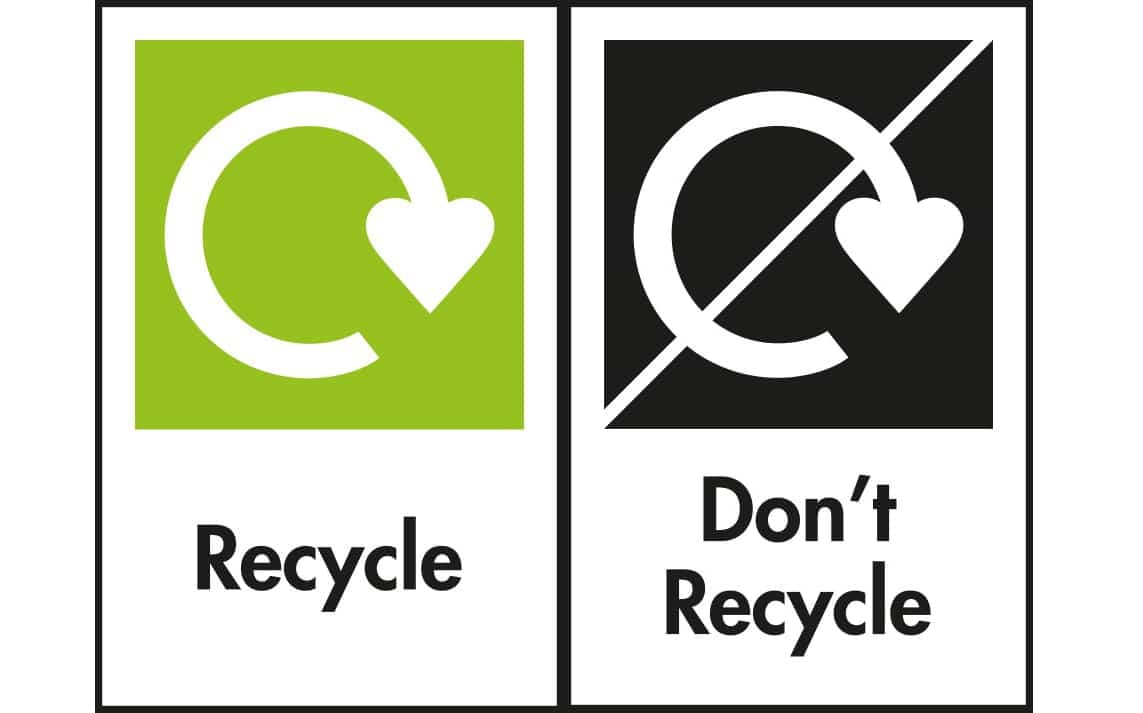
On-pack recycling labels
Packaging with a green recycling symbol is widely recycled material, whereas packaging with a black label is collected by under 50% of UK local authorities. Luckily, many of those ‘Do Not Recycle’ items can be collected by specialist waste management companies like First Mile.
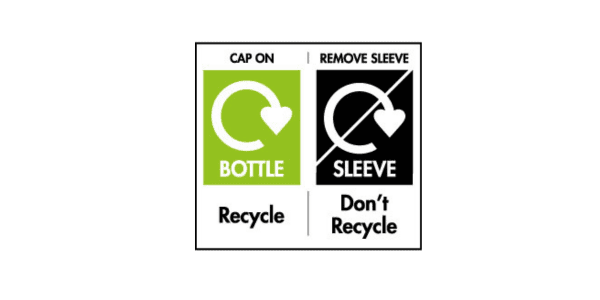
The green recycling labels can also include basic instructions, such as ‘flatten’ and tell you where to drop them for recycling e.g. Recycle with bags at large supermarkets. When packaging consists of more than one material, for example a plastic bottle with a film sleeve or yogurt pot with card sleeve, more than one recycling symbol is needed and this will show how each material should be recycled (or not).
For items that cannot be recycled at home, consumers are often directed to take them to a local recycling centre for proper disposal.
Bottles and jars – whether plastic or glass – might also have this additional instruction - ‘Lid on’ or ‘Cap on’. This stops small and lighter caps getting lost in in the recycling mechanism and means more materials are recycled.
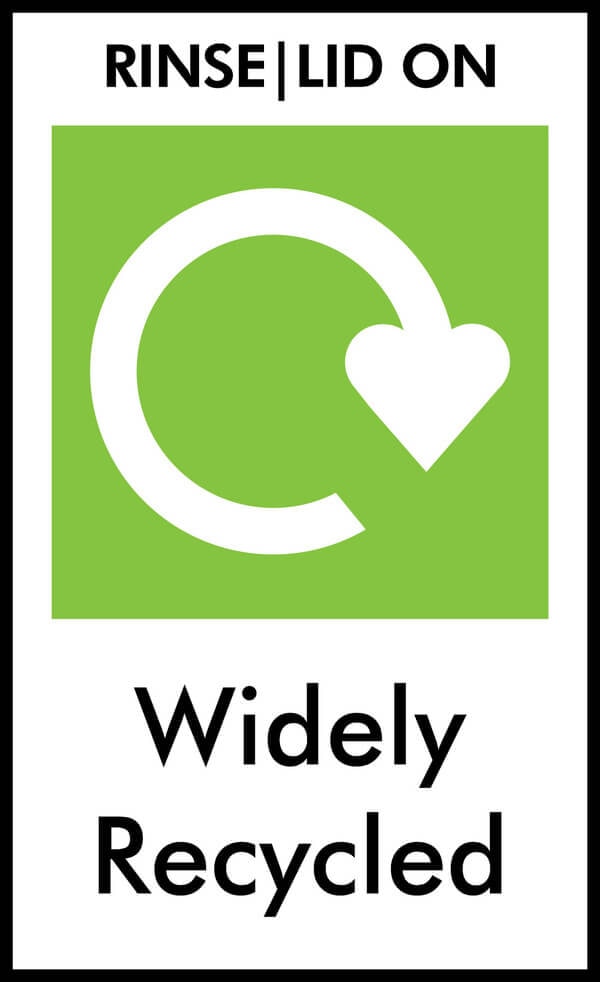
These clear instructions should make recycling easier for the consumer and ultimately increase recycling rates.
Another common packaging symbol is the Green Dot, which signifies a producer's financial contribution towards the recovery and recycling of packaging in Europe.
How to recycle by material
Glass
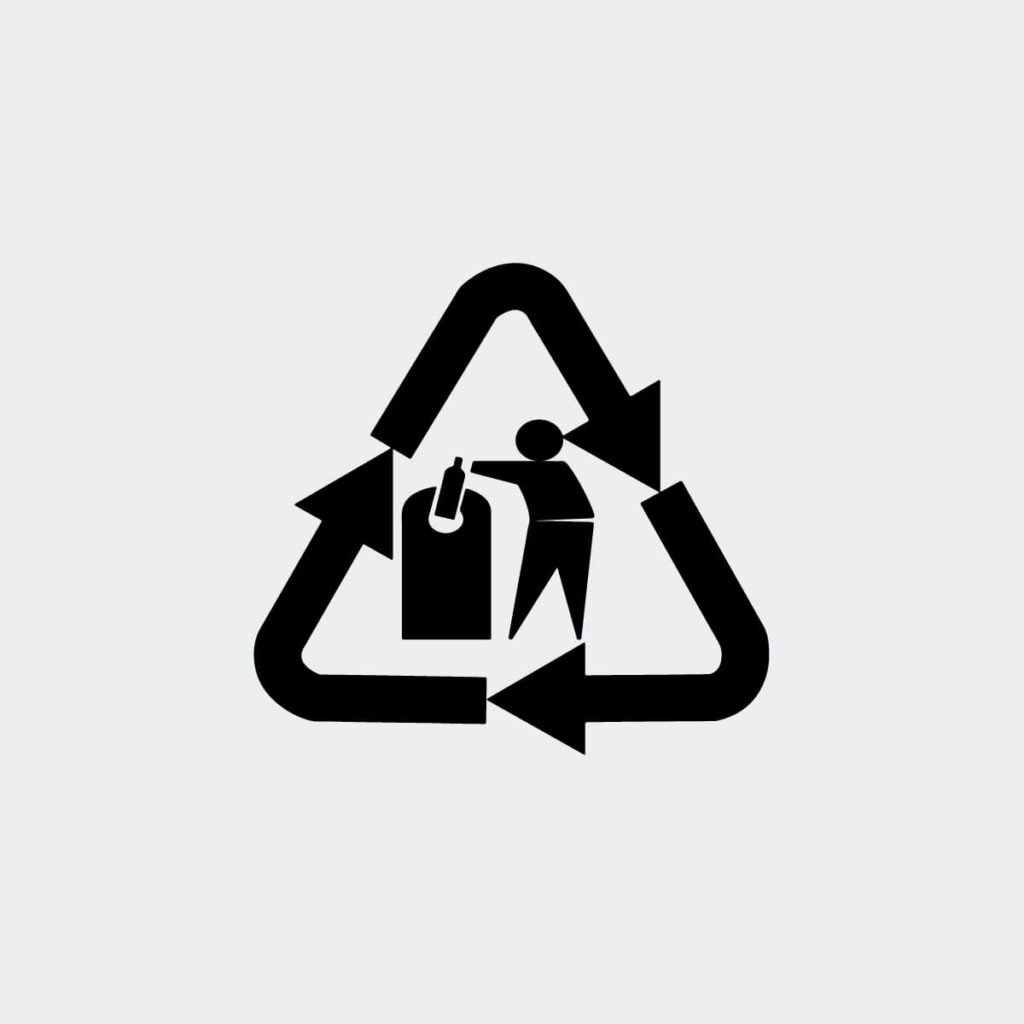
As well as the green ‘Recycle’ symbol, glass products might have this packaging label as a reminder that it can be widely recycled. Businesses in hospitality with a high volume of glass waste will likely need a single stream glass recycling collection, with a waste collection firm like First Mile. Glass jars and bottles should be recycled with the lid on.
Paper, card and cardboard
Most paper and card is widely and easily recycled but leave out soiled card, for example those greasy pizza boxes or paper towels (those can be collected with a specialist service).
First Mile offers a paper-recycling service suitable for all businesses. We recycle lower-grade paper into tissue paper and cardboard. The higher-grade paper is turned into new office paper – which you can buy back for your business.
We also offer a confidential-paper-shredding service and a cardboard recycling service.
For producers, Sourcing paper and card from well managed forests ensures sustainability and supports responsible forest management practices.
Metal cans and tins
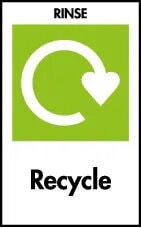
Metal tins and cans are usually steel or aluminium and most people know they should go in the recycling. They can usually be included in a mixed recycling bin, which at First Mile is our Dry Mixed Recycling service.
Many drink cans are made from recyclable aluminium, which can be reused multiple times, making it a sustainable choice. The recycling symbol on cans used for food will likely have an instruction to ‘Rinse’ which reduces the risk of contamination in a mixed recycling collection.
WEEE or waste electricals
Here’s a visual reminder not to throw your electrical waste in with your general waste. Electrical items can be recycled several ways, including via retailers and at recycling centres.
A logo identifying packaging products can provide essential information for proper disposal without revealing the package's contents.
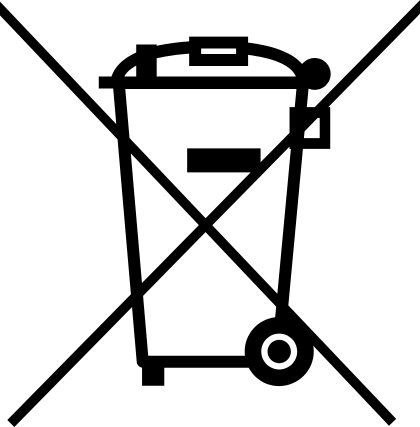
First Mile offers an electronics or WEEE recycling service. Whatever it is – laptop, fridge or anything with wires and plugs – we’ll make sure it gets a new life. This can either be as a refurbished item or broken down into individual materials.
Compostable and Recyclable Packaging Symbols
As manufacturers move to more sustainable and recycled materials for packaging, you might come across more compostable packaging. Any packaging with this logo should go in with your garden waste and not into plastics recycling.
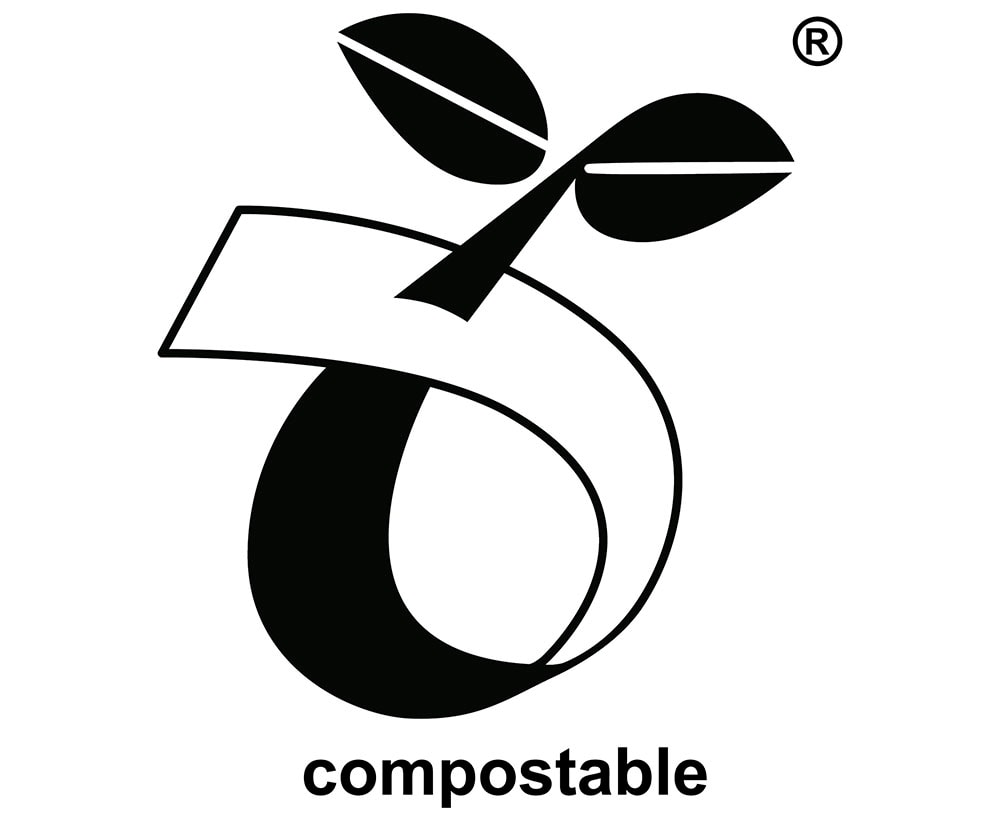
Check with your local authority or contact First Mile about our compostable packaging recycling service.
Plastic Recycling Codes and Symbols
Plastic products will include a resin code which looks like this. The number indicates what type of plastic it is made from.
Plastic recycling symbols are essential indicators that provide vital information for local recycling initiatives.
Plastic waste is one of the most challenging materials to recycle correctly. Local authorities won’t expect you to recycle your plastic by its plastic resin codes, but it can help to be able to identify them.

What does each resin identification code mean?
· 1 - PET, used for soft drinks, plastic bottles and some food packaging
· 2 - HDPE, used for milk cartons, cleaning products, yoghurt pots, etc
· 3 - PVC, used for cling film, car parts, thermal insulation, window fittings, etc
· 4 - LDPE (low density polyethylene), used for plastic bags and bin liners, etc
· 5 - PP, used for margarine tubs, microwave meal trays, etc
· 6 - PS, used for food containers, disposable cutlery, etc
· 7 - Other, used for all the plastics that don’t fit into the above categories
Composite and flexible plastics recycling
Flexible plastics are one of the last materials to be widely included in UK recycling collections and packaging made from composite plastics – like salad bags, crisp packets and plastic wrapping – have always been trickier to process because of their mixed materials.
These challenges specifically relate to the mixed materials used in composite plastics, making them harder to process. As recycling technology has improved, the recycling collection infrastructure has developed too.
Major supermarkets now offer recycling collections for all flexible plastics, including crisp packets and salad bags, along with plastic bags. Business waste services like First Mile can include flexible plastics as a single stream collection, reducing the amount of plastic going into general waste.
Get ready for Simpler Recycling by adding plastic waste to your collection
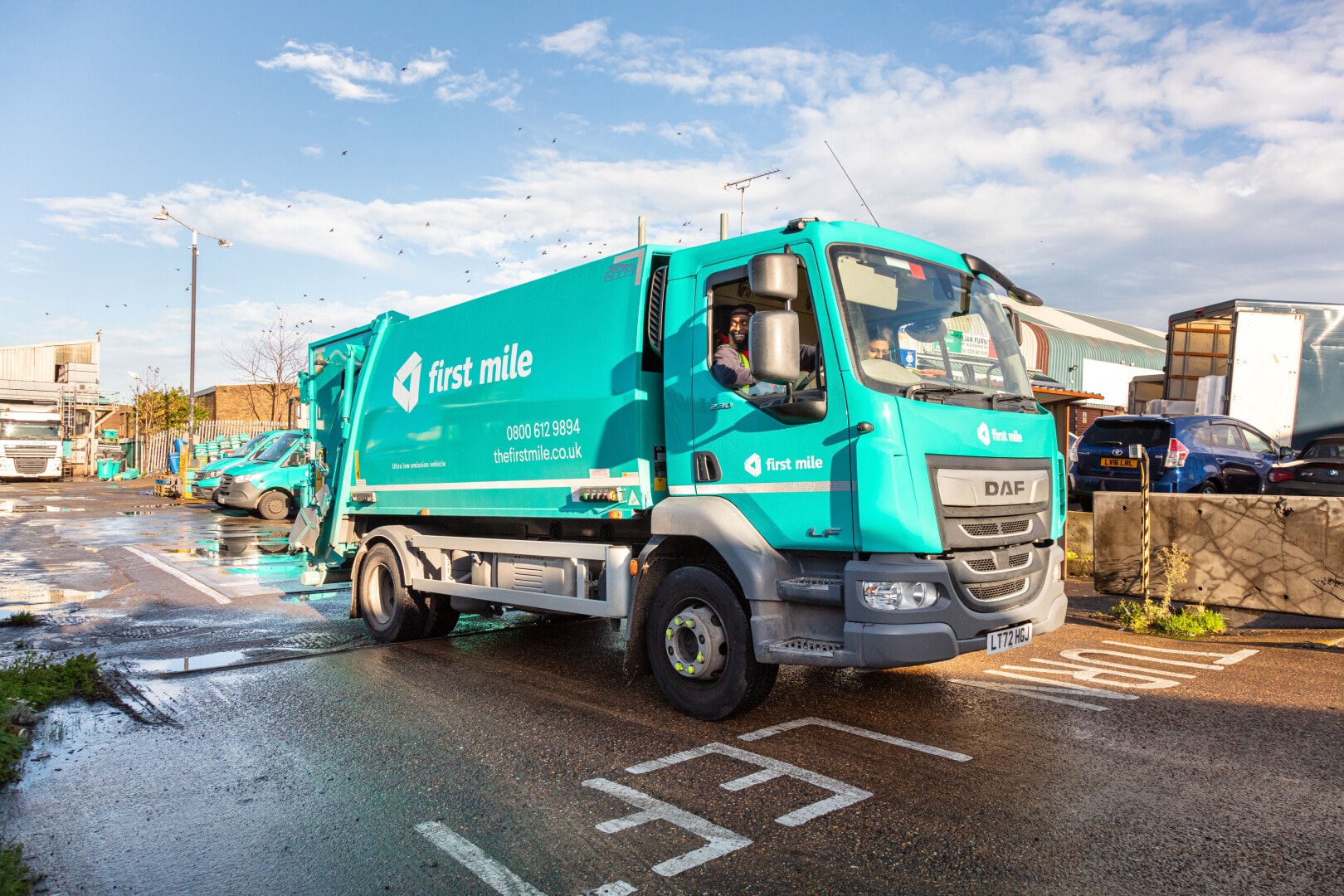
If you want to make your plastic recycling super simple, First Mile can help. Our single-use plastics recycling service deals with your plastic bottles, cleaning products, sauce bottles, etc (numbers 1, 2 and 5).
We can also collect and recycle your flexible plastic – that’s plastic carrier bags, cling film, bubble wrap, etc (number 4) – and turn it into black bin bags.
What plastics cannot be recycled?
Other plastic, such as PVC (3) and PS (6) (or polystyrene), is difficult to recycle and needs to go into general waste. However, at First Mile we won’t send anything to landfill. Any non-recyclable waste is incinerated, capturing electricity and heat from the process. The electricity is then sent to the National Grid, while heat is used to provide heating and hot water to over 100,000 UK homes. Any ash by-products from this process are reused as aggregate for construction.
Help Your Business With Simpler Recycling and EPR for Packaging.
The changes to packaging and new business recycling rules are complex but we can help! You can read our blogs if you’re not clear on the upcoming changes.
Recycling logos play a crucial role in helping consumers understand packaging recyclability and promoting correct recycling practices.
We also have some free downloadable posters that act as a great reminder of what can go into each recycling stream – just print them off here to help your workplace improve recycling rates. Or get in touch with our teams here at First Mile – our customers benefit from our support and advice as part of our waste collection service.



